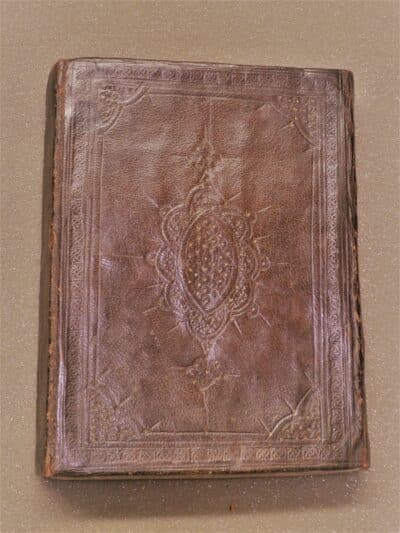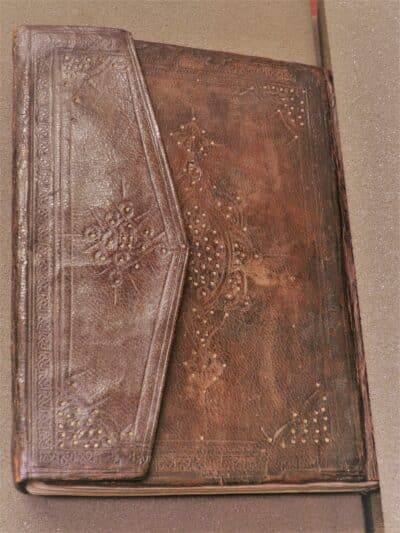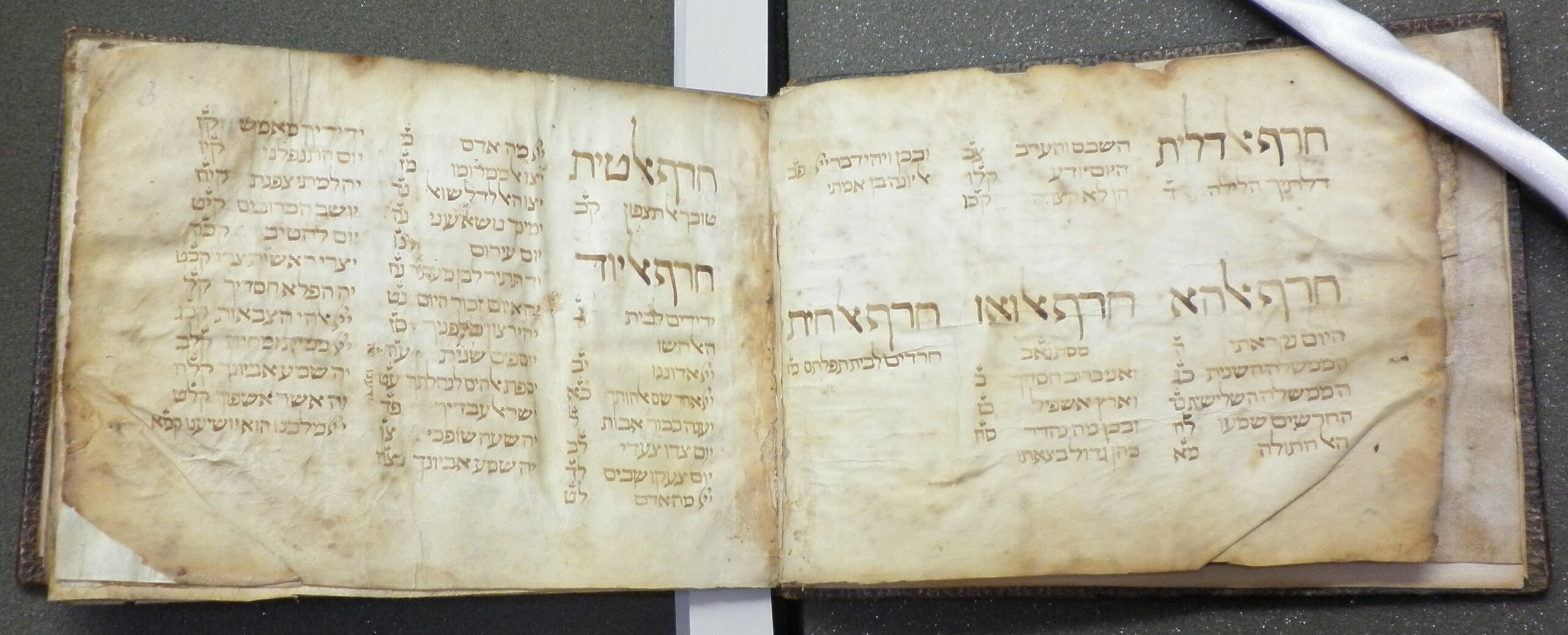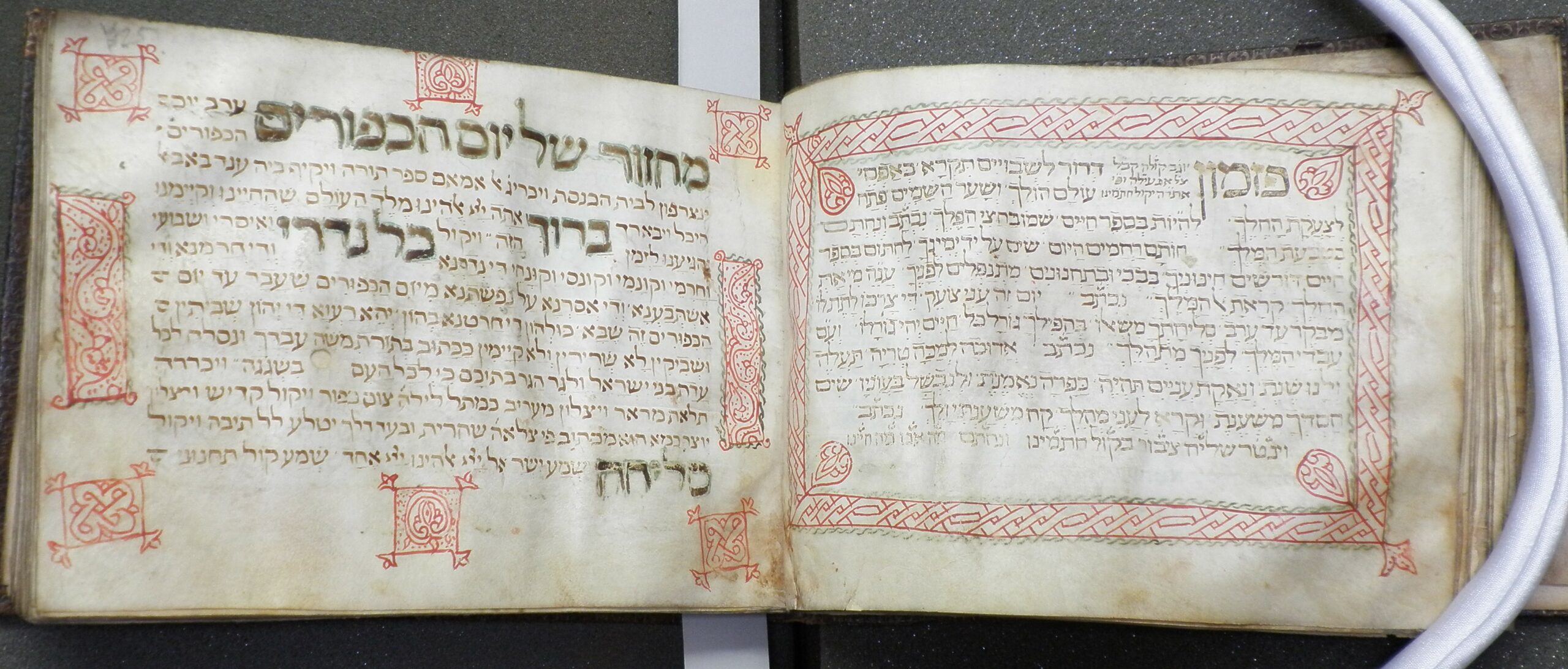Hebrew Manuscripts at Worcester College, Oxford

31st May 2018
Hebrew Manuscripts at Worcester College, Oxford
We take a slight detour from the more common subjects of our library collections this month as we feature three medieval Hebrew manuscripts. They are unusual in that Worcester College has very few medieval manuscripts, the collections of our medieval predecessor Gloucester College (1283-1539) having been dispersed on its dissolution; we are also not known for our Hebrew collections (unlike, say, Christ Church or Corpus Christi College Libraries). Yet we have three Hebrew manuscripts dating from the 14th and late 15th centuries, all religious in nature, but which range across early Hebrew manuscript culture, both geographically and in variety of script and binding.
MS 9 is an abbreviation of Nachmanides’ long commentary on the Pentateuch. Written in Sephardic semi-cursive script, it was produced in the late 15th century, probably in the Iberian peninsula. Bound in sheep’s leather, externally this volume is not dissimilar from the binding of many of our early printed books. Where it differs, however, is in the Cairo Genizah-style fragments posted on its inner boards: a fragment of the Mishnah Masekhet Makshirin with Maimonides’ commentary in Judeo-Arabic and an anonymous commentary on the Babylonian Talmud.
MS 10 contains three separate manuscripts bound together: Rashi’s commentary on Genesis; anonymous additions to Rashi’s commentary; and a Midrashic commentary on the Torah by R. David ben Avraham ben ha-Ramban, a grandson of Maimonides. All three texts are written in ‘Eastern’ semi-cursive script, and were produced in the (late?) 15th century in the Middle East. With an Islamic-style wraparound binding in goat leather, with flap, this is the most impressive binding of the three volumes, with blind and gilt tooling around the edges and a decorative panel on its front cover.
MS 11, the earliest of the three, dating to before 1360, is a prayerbook in Hebrew, although with prayer headings in Judeo-Arabic (i.e. Arabic written in the Hebrew script). The prayerbook includes prayers for the high holidays according to the North African rite, and at the beginning an alphabetical list of piyutim (liturgical poems), all of Sephardic origin. This manuscript is thought to have been produced in Morocco and is bound in a leather binding with a filleted blind-tooled frame and two blind-tooled decorative panels on front and back cover. Written on vellum, this is the most decorative of the three, with its text decorated at points with illumination. It has been closely read by a former owner, with corrections added to the text of a piyut in places (see, for example, folio 116 recto).

Textual correction in the margin of MS 11, folio 116 recto.
In terms of provenance, MSS 9 and 11 both have useful early evidence. A note on MS 9, the copy of Nachmanides’ commentary on the Pentateuch, shows that it was commissioned by ‘Joel’ and two former owners have inscribed their names: Shemu’el bar Half[on?] on folio 1 recto, and Sa’adyah [?] bar Yehudah ho-Kohen [?] at the end of the manuscript. MS 11, the North African prayers, actually has a deed of sale at the end of the index (folio 4 verso): Abraham bar Nisim ibn Ḥabhibh bought the manuscript from R. Sh’muel bar Yoseph Alshawi in most probably 5120 (in the Hebrew calendar), i.e. 1359/60, which provides the terminus ante quem for the date of the manuscript (see Beit-Arié, no. 2448 (col.480), which notes that this was read using a UV lamp).

The deed of sale at the end of the index to MS 11
Whilst we are fortunate to have such detailed early provenance information, similar information is not available for the period immediately prior to the volumes’ acquisition by Worcester College Library. It would appear that they came to the Library early in the life of the College: each volume bears the Library’s 18th-century bookplate, with the former locations in the library shelves scored out: MS 11 for example was previously shelved at B.a.12 and TD 4, before being collected together with other manuscripts.
All three were certainly here by 1852 as they feature in Coxe’s catalogue of manuscripts in Oxford colleges (the Catalogus codicum mss qui in collegiis aulisque Oxoniensibus hodie adservantur), published in that year.
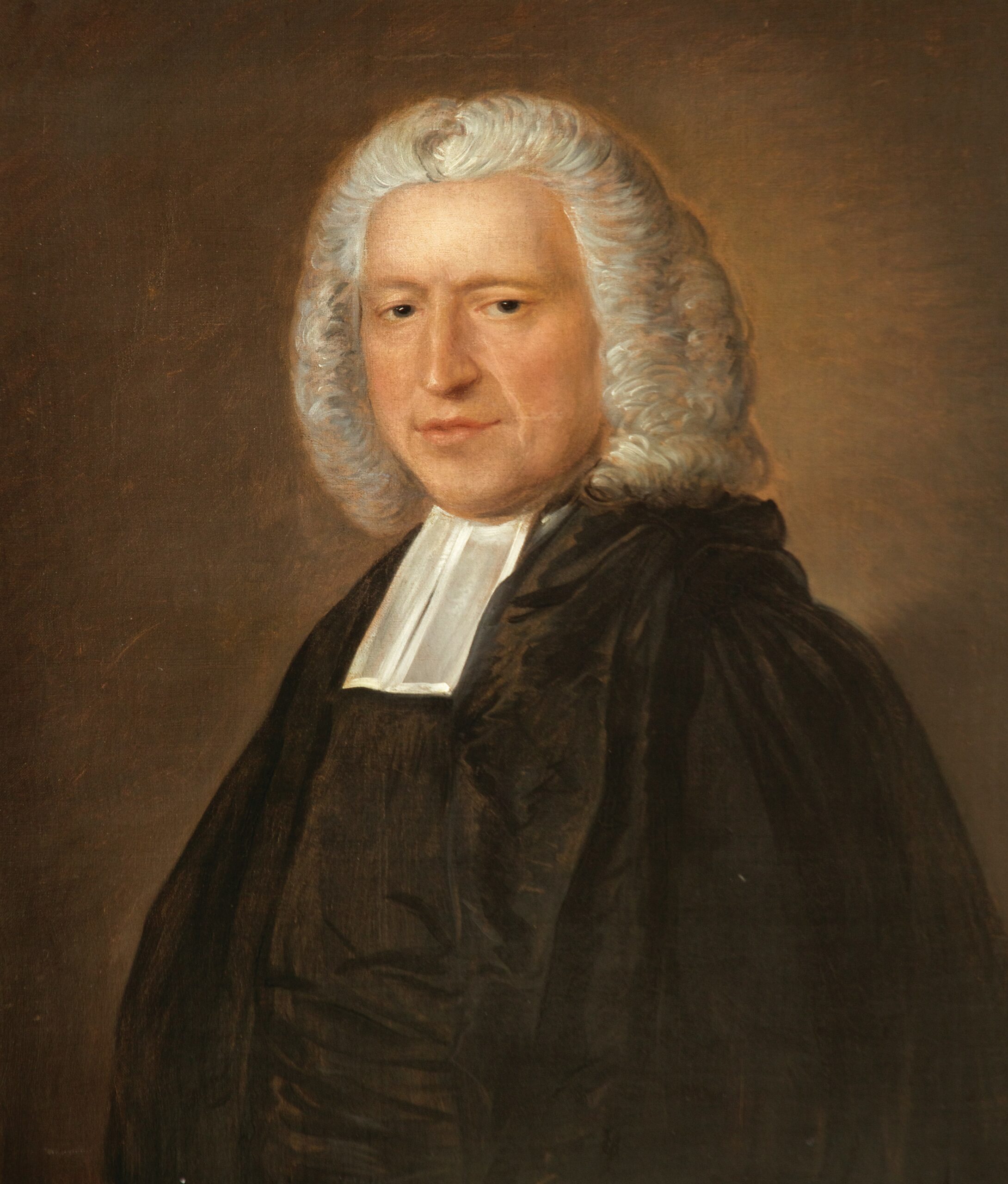
William Gower (c.1702-1777), 2nd Provost of Worcester College
One hypothesis is that they came as part of the books left by the College’s second Provost, William Gower (c.1702-1777), the other great early benefactor to the Library (in addition to George Clarke). His collection of books came to Worcester in 1777 and, in contrast to Clarke’s library, it seems to have contained books of a wider linguistic range: whilst Clarke ‘read Latin, Greek, French, and Italian, and had one or two architectural books in German, Gower knew Spanish, Portuguese, Arabic, and Hebrew as well’ (Wilkinson, ‘Worcester College Library’, page 272). Hebrew had been studied in Oxford since the mid-16th century, and under the University’s Laudian statutes of 1636 it was studied as part of the MA degree (Brockliss, The University of Oxford, page 234). It is not, therefore, surprising that Gower should know Hebrew. Yet much still remains to be learnt about Gower and his collection, just as it is hoped more can be learnt about these three Hebrew manuscripts. They are not unknown, having been included in Neubauer’s Catalogue of the Hebrew Manuscripts in the Bodleian… and… college libraries of Oxford, and, in more recent years, the KTIV International Digital Library of Hebrew Manuscripts at the National Library of Israel (see http://web.nli.org.il/sites/nlis/en/manuscript/pages/results.aspx#query=lsr01,contains,all&query=any,contains,Worcester). It is hoped that in the near future digital images will be available there, which will allow an even greater number of people to study them.
Mark Bainbridge, Librarian
Bibliography
- Beit-Arié, M., Catalogue of the Hebrew manuscripts in the Bodleian Library: supplement of addenda and corrigenda to Vol. 1 (A. Neubauer’s catalogue) (Oxford: Clarendon Press, 1994)
- Brockliss, L. W. B., The University of Oxford: a history (Oxford: OUP, 2016)
- Coxe, H. O., Catalogus codicum mss. qui in collegiis aulisque Oxoniensibus hodie adservantur (Oxford: E typographeo Academico, 1852)
- Neubauer, A., Catalogue of the Hebrew manuscripts in the Bodleian Library and in the college libraries of Oxford (Oxford: Clarendon Press, 1886-1906)
- Wilkinson, C. H., ‘Worcester College Library’, Transactions of the Oxford Bibliographical Society, 1927, pages 263-326









